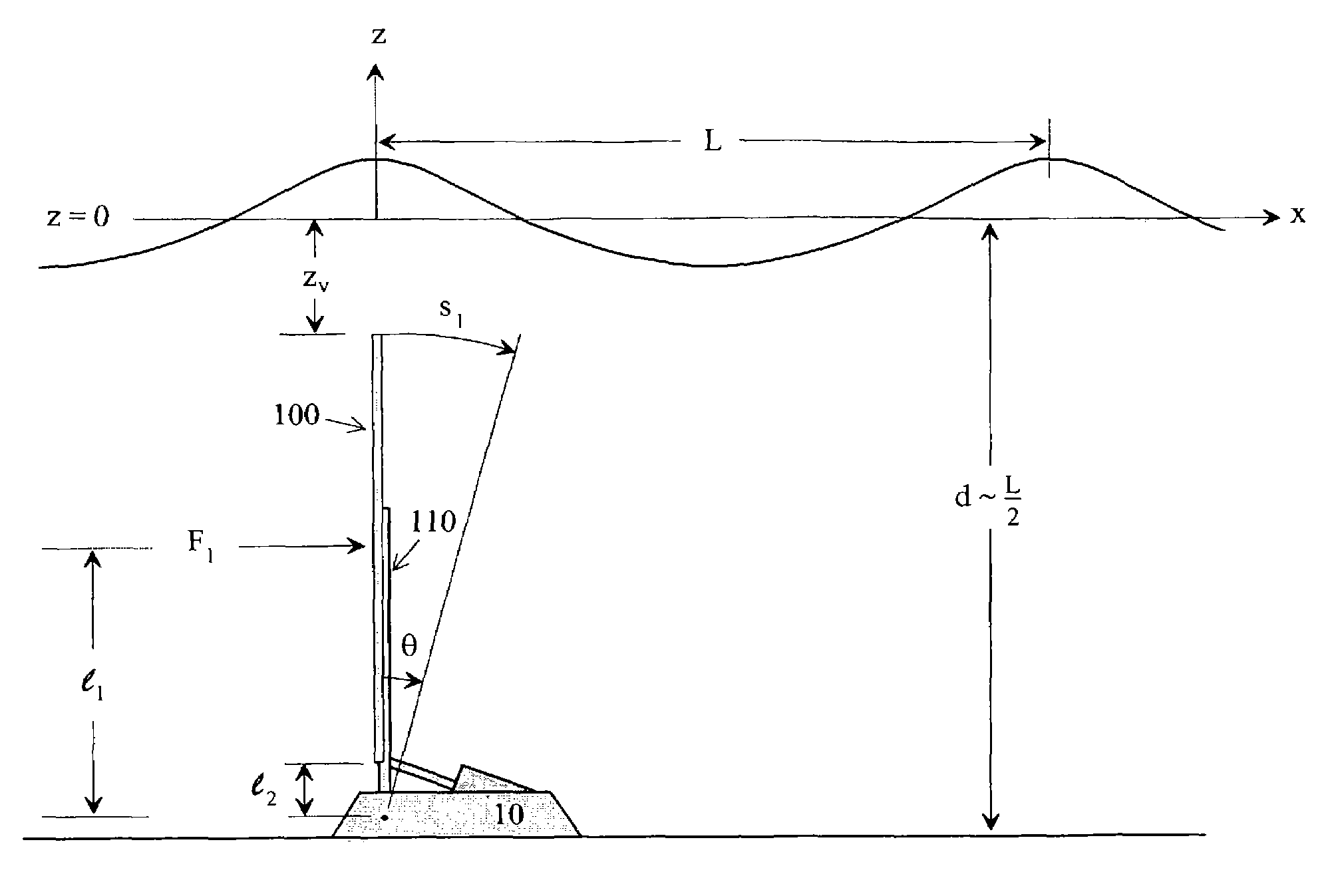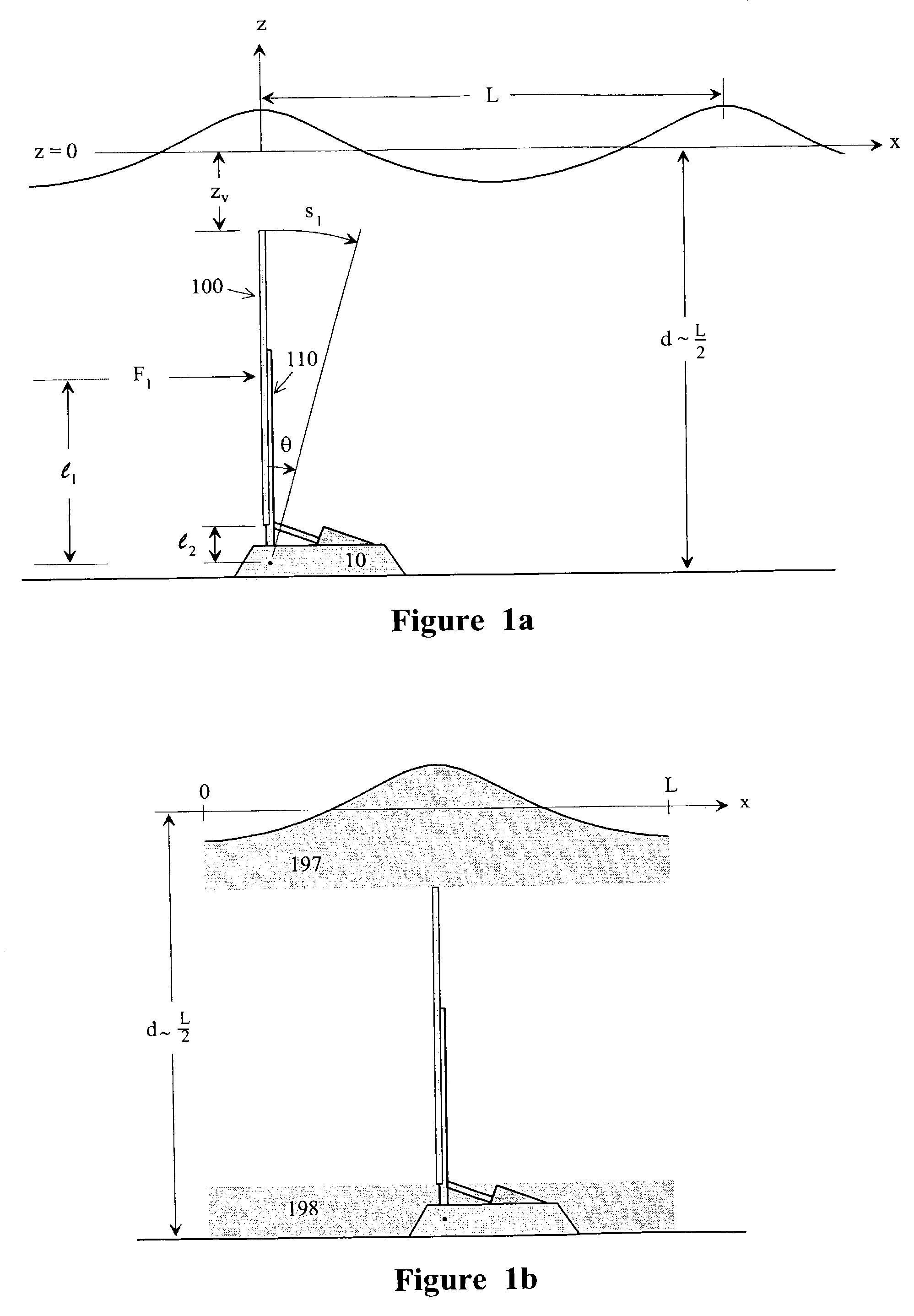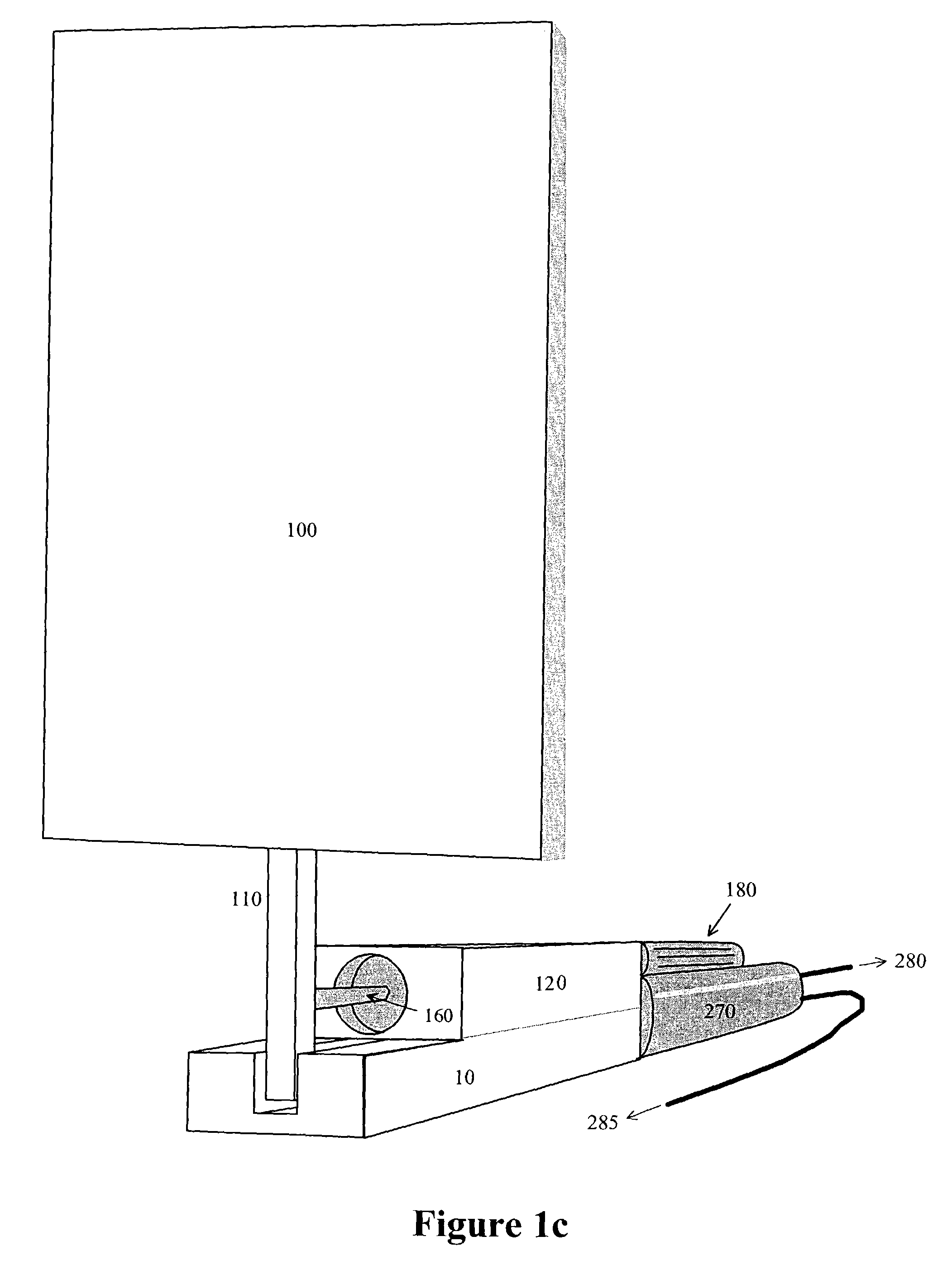Wave energy conversion device for desalination, ETC
a wave energy and desalination technology, applied in the direction of piston pumps, fluid couplings, rotors, etc., can solve the problems of low efficiency of system operation, low efficiency of fuel supply, and inability to produce the high pressure that might be necessary for efficient desalination and other high pressure uses. , to achieve the effect of minimizing the exposure to wave action and low profil
- Summary
- Abstract
- Description
- Claims
- Application Information
AI Technical Summary
Benefits of technology
Problems solved by technology
Method used
Image
Examples
Embodiment Construction
[0025]Illustrative examples of a wave energy conversion device in accordance with the present invention are described in detail below. In a preferred application, the system utilizes wave energy as a source of power to drive a membrane-type reverse osmosis desalination process by either compressing seawater or brackish water. The principle of impulse-type wave energy conversion is employed to generate the required pressures to drive the reverse osmosis process. A particularly advantageous impulse-type “wave motor” structure is employed to produce efficient desalination operation. However, it is to be understood that the principles of the invention disclosed herein may be applied equivalently to other types of impulse-type wave energy conversion structures.
[0026]From wave theory, water particle movements due to wave energy flux occur within a depth of L / 2, where L is the wavelength of the wave. The water depth is measured from the still water level to the seabed. The depth of water i...
PUM
 Login to View More
Login to View More Abstract
Description
Claims
Application Information
 Login to View More
Login to View More - R&D
- Intellectual Property
- Life Sciences
- Materials
- Tech Scout
- Unparalleled Data Quality
- Higher Quality Content
- 60% Fewer Hallucinations
Browse by: Latest US Patents, China's latest patents, Technical Efficacy Thesaurus, Application Domain, Technology Topic, Popular Technical Reports.
© 2025 PatSnap. All rights reserved.Legal|Privacy policy|Modern Slavery Act Transparency Statement|Sitemap|About US| Contact US: help@patsnap.com



